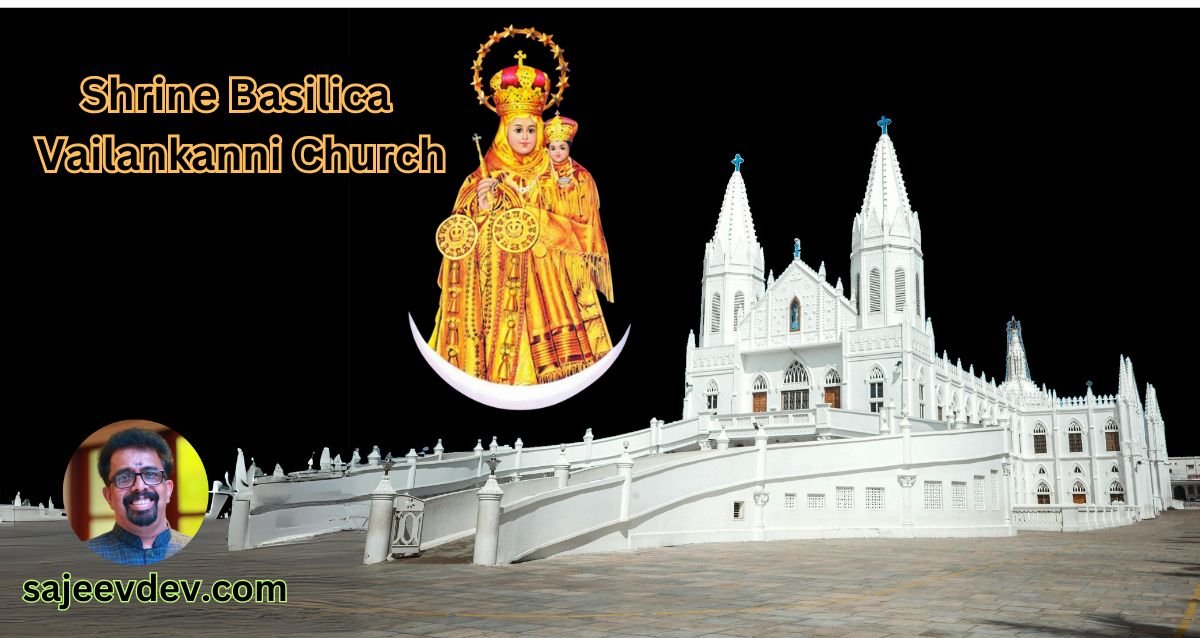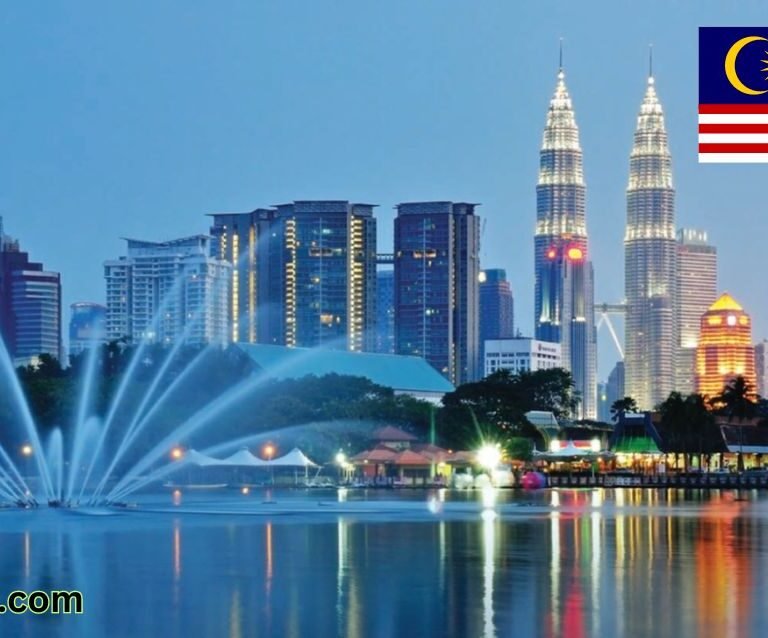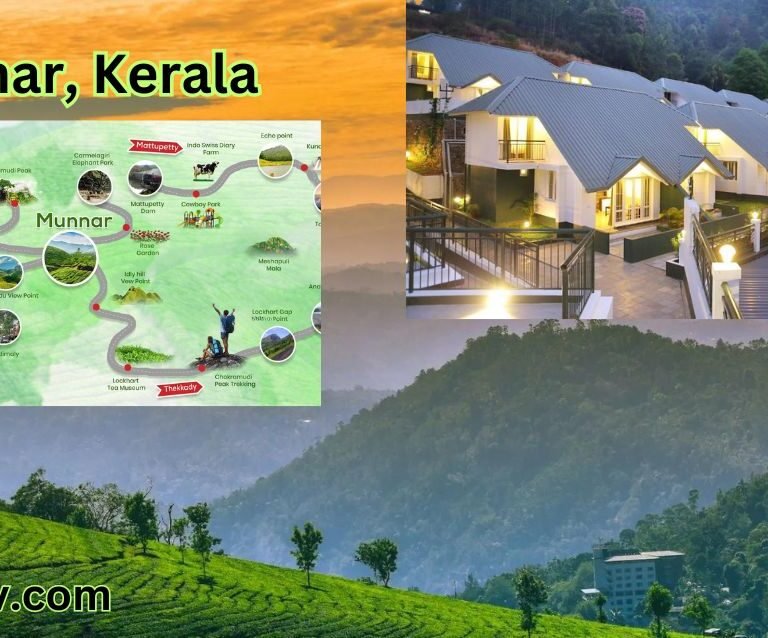Vailankanni, also known as Velankanni or Velanganni
Vailankanni, also known as Velankanni or Velanganni, is a quaint hamlet nestled along the sandy shores of the Bay of Bengal. Located approximately 350 kilometers south of Chennai and just 12 kilometers from Nagapattinam, Vailankanni boasts a unique blend of scenic beauty and rich history. This picturesque village, known for its serene ambiance, has played a pivotal role in the historical and religious landscape of the region.
Historically, Vailankanni was a bustling port town, actively engaged in maritime trade. Traders from across the globe would dock their ships at its harbor, exchanging goods and fostering cross-cultural interactions. This vibrant trading center was instrumental in shaping the economic and social fabric of the area. However, with the passage of time and the shift in trade routes, Vailankanni transitioned from a bustling port to a tranquil village, known for its serene and peaceful environment.
The town’s most notable transformation can be attributed to its Christian shrine, the Basilica of Our Lady of Good Health. This sacred site, popularly known as the Virgin of Velai, draws millions of pilgrims annually, making Vailankanni an important religious destination. The shrine’s origins trace back to multiple miracles believed to have occurred here, attracting devotees from various parts of the world. The Basilica stands as a testament to the unwavering faith and historical significance of Vailankanni, holding an esteemed place in both religious and cultural contexts.
Today, Vailankanni is not only a site of spiritual pilgrimage but also a testament to its historical roots and serene natural beauty. Visitors to this hamlet can explore its rich heritage, witness the harmonious blend of history and religion, and experience the tranquility that envelops this unique village on the coast of the Bay of Bengal.
Historical Significance
Vailankanni, often revered for its ecclesiastical significance, has an equally compelling historical backdrop. Once a thriving commercial hub, Vailankanni’s history is intertwined with ancient trade routes and early global commerce. Historical records indicate that from as early as the first century CE, Vailankanni engaged in robust trade activities with ancient Rome and Greece. This commerce was facilitated via a navigation canal that once traversed the region, establishing Vailankanni as a notable point in the maritime routes known as the ‘City of Coramandel.’
The thriving trade brought by this canal played a pivotal role in shaping the village’s early economic structure. Writers from the classical era frequently mentioned Vailankanni in their works, highlighting its vital role in connecting the Indian subcontinent with Western civilizations. Goods such as spices, textiles, and semi-precious stones were regularly exchanged, contributing to the village’s burgeoning prosperity.
The Portuguese, who arrived in the region in the 16th century, recognized Vailankanni’s importance as part of the larger Coromandel Coast’s network. Their records further detail the village’s strategic and economic value, underscoring its historical prominence within the region. The Portuguese influence is still palpable, not only in the architectural vestiges scattered through the village but also in the cultural and religious fabric of the community.
However, as Nagapattinam began to expand and gain prominence, Vailankanni’s significance as a trade center gradually waned. The progressive sedimentation and eventual disuse of the navigation canal contributed to this decline. Despite the ebb in its commercial fortunes, the village retained its historical richness, transforming over centuries into a pilgrimage site while quietly echoing stories of its vibrant past.
The Basilica of Our Lady of Good Health
The Basilica of Our Lady of Good Health, often referred to as the Sanctuary of Our Lady of Velankanni, stands as the heart of Vailankanni, drawing millions of pilgrims annually. The origins of this revered shrine are deeply intertwined with the legend and belief in the divine intervention of the Blessed Virgin Mary. This devotion is fueled by three significant miraculous events that have perpetuated faith, hope, and reverence among believers.
The first of these miracles narrates the apparition of the Virgin Mary to a young shepherd boy in the 16th century. The boy, while resting under a banyan tree with his herd, witnessed a radiant vision of the Mother Mary holding the Christ Child in her arms. This divine encounter prompted the construction of a modest chapel on the spot, marking the inception of what would become one of the most significant Marian shrines.
The second miracle involved a handicapped buttermilk vendor who experienced a transformative healing through the intercession of the Virgin Mary. According to the tale, the vendor, while resting near Velankanni, was visited by the Virgin Mary who requested buttermilk for her child. Upon offering his humble provisions, the vendor was miraculously cured of his impairment. This miracle fortified the faith of the local population, leading to increased veneration and expansions of the shrine.
The third notable miracle is the safe rescue of Portuguese sailors in the 17th century. Facing a perilous storm in the Bay of Bengal, the sailors prayed fervently to the Virgin Mary for salvation. Their prayers were answered as the storm subsided, allowing them to reach the shore safely. In gratitude, the sailors contributed generously to the shrine, significantly enhancing its structure and prominence.
The culmination of these sacred events and the growing devotion towards Our Lady of Good Health led to Pope John XXIII raising the shrine to the status of a minor basilica in 1962. This ecclesiastical recognition further cemented the significance of the Basilica of Our Lady of Good Health as a pivotal center for Marian devotion, continuing to inspire countless pilgrims from around the globe.
Annual Novena and Pilgrimages
Vailankanni, one of India’s most renowned pilgrimage destinations, attracts nearly 5 million pilgrims annually. The highlight of the spiritual calendar here is the celebrated Novena, a nine-day period marking deep devotion and prayers to the Virgin of Velai. Pilgrims from across the globe flock to this sacred coastal town, creating a profound atmosphere of unity and piety.
The Novena, conducted in early September, culminates on the feast day of Our Lady of Good Health on September 8th. This period is marked by special masses, processions, and the recitation of the Rosary. The Basilica of Our Lady of Good Health becomes a cauldron of spirituality, with thousands of devotees offering their prayers and seeking blessings. Many attendees participate in fasting and foot pilgrimages to demonstrate their faith and devotion.
The influx of pilgrims transforms Vailankanni into a bustling hub of religious fervor. Temporary accommodations, food stalls, and medical facilities are set up to cater to the needs of the vast number of visitors. The streets are adorned with garlands and illuminated with vibrant lights, enhancing the festive atmosphere. Volunteers and local organizations work tirelessly to provide comfort and assistance to the pilgrims, ensuring a serene yet spirited environment.
The annual pilgrimage season is characterized by various religious activities and rituals. Notable among these are the flag hoisting ceremony on the first day of the Novena, daily Eucharistic celebrations, and the grand procession carrying the revered statue of the Virgin of Velai. Each ritual is imbued with profound spiritual significance, offering pilgrims moments of reflection, supplication, and deepened faith. The environment during this period is a complex blend of solemnity and jubilance, resonating with the collective devotion of millions.
Impact of the 2004 Tsunami
The tragic tsunami that followed the Indian Ocean earthquake of December 26, 2004, had far-reaching consequences, and Vailankanni was not spared. As the giant waves surged inland, the coastal town witnessed significant devastation. Homes were demolished, infrastructure was destroyed, and the serene landscape turned into a scene of chaos and despair.
Amidst this catastrophe, the local community’s immediate response was a testament to their resilience. Despite the overwhelming destruction, the people of Vailankanni showcased remarkable solidarity. Local authorities, along with national and international aid organizations, swiftly coordinated rescue and relief operations. Temporary shelters were set up, and essential supplies began to pour in to support the affected population.
The iconic Basilica of Our Lady of Good Health, a symbol of faith and hope, stood firm, albeit with some damages. The church played a crucial role in the recovery efforts. It not only became a sanctuary for those seeking solace but also provided logistical support for the relief activities. The clergy and volunteers worked tirelessly, offering both spiritual and physical aid to the distressed.
Rebuilding efforts kicked off soon after the immediate relief operations. These were characterized by a blend of government initiatives and community-driven projects. Emphasis was placed on constructing more resilient infrastructure to withstand future calamities. Housing projects, restoration of the church premises, and improved disaster management plans were integral to these efforts.
The 2004 tsunami’s impact on Vailankanni was profound. However, the swift response and the collaborative rebuilding efforts underscored the resilience of the town. Vailankanni’s spirit, undeterred by the scale of the disaster, emerged stronger, reflecting a legacy of endurance and unity in the face of adversity.
Accommodation Options in Vailankanni
When planning to visit Vailankanni, pilgrims and tourists will find a variety of lodging options that cater to diverse preferences and budgets. The town offers both church-operated boarding facilities and private accommodations, ensuring that every visitor can find a comfortable place to stay.
The Basilica of Our Lady of Good Health provides boarding arrangements that are particularly popular among pilgrims. These church-operated facilities are known for their affordability and simplicity, making them an ideal choice for those on a spiritual journey. Available rooms range from dormitories to private rooms, with basic amenities like clean bedding, shared bathroom facilities, and dining halls that serve meals on a schedule. These accommodations vary in tariff, often priced very competitively to ensure accessibility for all visitors.
For those seeking more variety, Vailankanni hosts numerous hotels that range from budget to mid-range to luxury accommodations. Budget hotels offer basic amenities such as clean rooms, private bathrooms, and sometimes complimentary breakfast. Mid-range hotels often provide additional comforts such as air conditioning, room service, and on-site restaurants serving a mix of local and international cuisines.
Luxury accommodations in Vailankanni cater to those desiring a more lavish stay. These establishments usually feature well-appointed rooms with modern amenities, including Wi-Fi, satellite television, swimming pools, fitness centers, and valet services. The fee structures of these hotels vary widely, allowing guests to select a stay that fits their financial plans.
During the annual festival seasons, particularly around the Feast of Our Lady of Good Health in September, the demand for accommodations surges. During this time, many local residents rent out private homes to visitors. These private rentals offer a homely atmosphere and often come equipped with kitchen facilities, providing an ideal stay for families or groups.
Ultimately, Vailankanni ensures that every visitor, regardless of their purpose of stay, can find appropriate lodging that caters to their needs and enhances their experience in this historically and spiritually significant town.
Food and Other Amenities
Vailankanni, a revered pilgrimage destination, offers an array of dining options catering to the diverse culinary preferences of its visitors. Pilgrims and tourists will find numerous establishments, from modest ‘eating houses’ to bustling food stalls lining the main road, each providing a unique gastronomic experience. The availability and variety of food reflect the town’s capacity to accommodate the needs of those who come to seek spiritual solace as well as those simply savoring the local culture.
‘Eating houses’ in Vailankanni, often family-run, offer traditional South Indian meals that are flavorful, wholesome, and reasonably priced. These eateries serve a range of dishes, such as idlis, dosas, and thalis, ensuring that guests can indulge in authentic regional cuisine. For those desiring a quicker bite, numerous food stalls along the roads offer snacks like vadas, samosas, and freshly cut fruits. The synergy of flavors and aromas from these stalls adds to the vibrant atmosphere, making dining a memorable experience here.
In addition to the abundance of food options, Vailankanni provides practical amenities to enhance the convenience of visitors. Among the notable facilities are several STD booths strategically placed around the town. These booths allow pilgrims to make long-distance calls, ensuring they stay connected with loved ones. Whether local or international, these services offer an essential communication bridge for visitors.
Understanding the essence of Vailankanni’s food and amenities ensures that visitors are well-prepared for their journey. The town’s thoughtful blend of traditional dining options and necessary facilities cater to the comprehensive needs of its pilgrims and tourists, making Vailankanni not just a place of spiritual significance, but also a hospitable destination for all.
Visiting Vailankanni: Tips and Travel Information
Planning a visit to Vailankanni, known for its rich historical heritage and revered as the site dedicated to the Virgin of Velai, involves meticulous preparation to maximize the pilgrimage experience. Located in Tamil Nadu, India, Vailankanni is well-connected by various modes of transportation. The nearest airport is Tiruchirappalli International Airport, around 150 kilometers away. From there, visitors can opt for a taxi or a bus service to reach Vailankanni. Alternatively, Nagapattinam Railway Station, just 10 kilometers away, serves as the closest railhead, providing convenient train connections.
The best time to visit Vailankanni is between October and March. During this period, the weather is relatively mild, making it comfortable for outdoor activities and sightseeing. The annual Vailankanni festival in September attracts many pilgrims; however, it’s advisable to book accommodations well in advance if you plan to visit during this time to avoid any last-minute inconveniences. Several budget-friendly and mid-range hotels are available in and around Vailankanni to cater to the influx of visitors.
For a spiritually enriching experience, visitors are encouraged to participate in the daily mass offerings at the Basilica of Our Lady of Good Health, which is the focal point of Vailankanni. Additionally, the church conducts special prayer services and festivities that highlight the cultural and religious significance of the Virgin of Velai.
First-time visitors should keep a few safety tips in mind. Wear comfortable clothing and shoes suitable for walking, as you may need to traverse various pilgrimage sites within the town. Stay hydrated, particularly during the hotter months, and carry sun protection to avoid any health issues. While Vailankanni is generally safe, it’s wise to keep personal belongings secure and be vigilant in crowded places.
Lastly, to ensure a fulfilling visit, embrace the local customs and practices, showing respect for the spiritual ambiance that defines Vailankanni. By following these tips and travel information, your pilgrimage to Vailankanni can be both a comfortable and spiritually uplifting experience.









